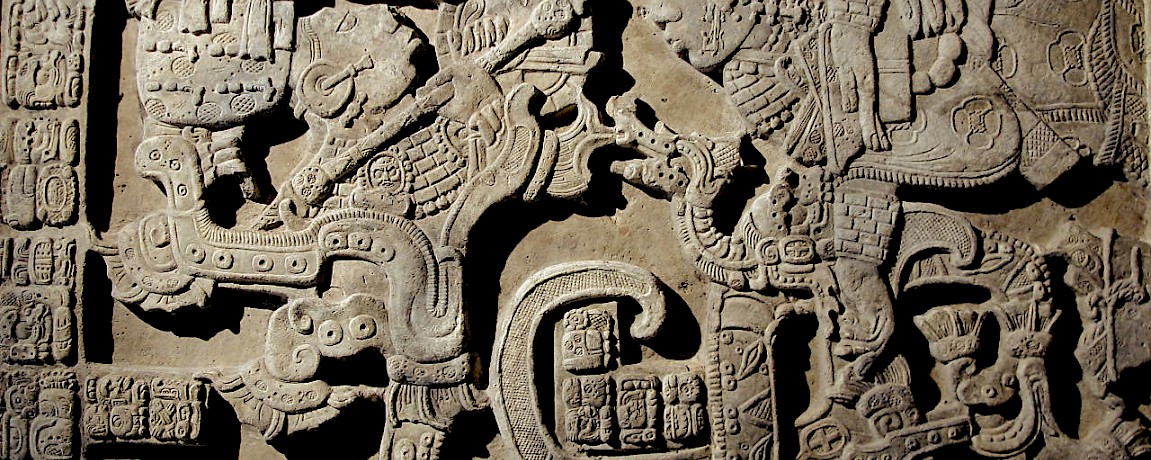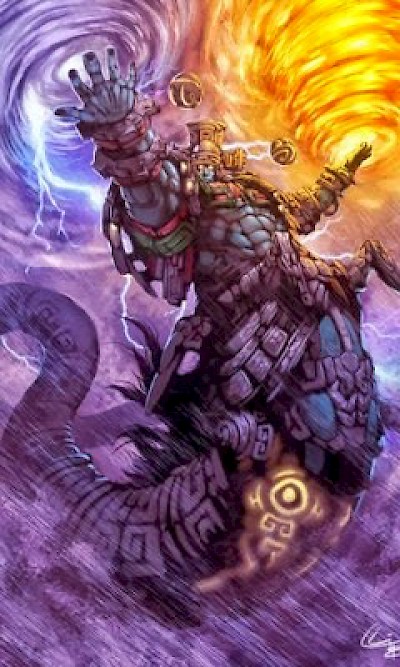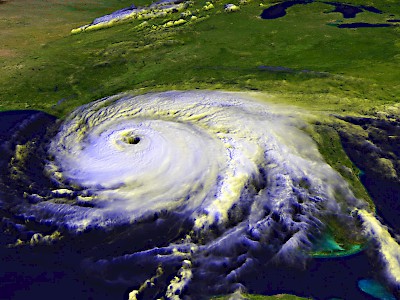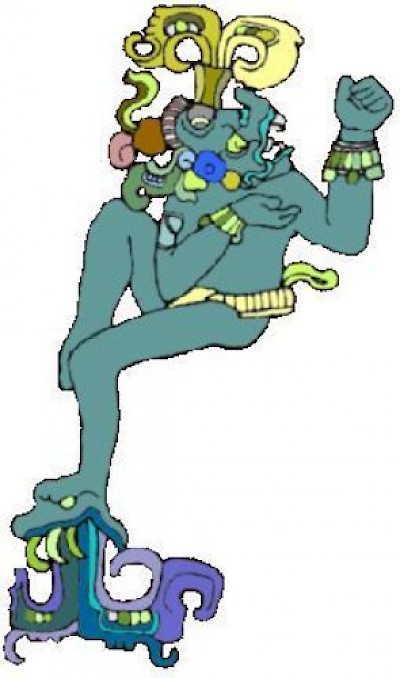Mayan Gods: Huracan
Huracan, Bolon Tzacab, U Ku’x Kaj, the One-Legged God, Source of the Sky, Water and Fire
Then may it be sown, may it dawn. May there be true life-giving roads and pathways. Give us steadfast light that our nation be made steadfast. May the light be favorable that our nation may be favored. May our lives be favored so that all creation may be favored as well. Give this to us, you, Huracan…
—Popol Vuh
Like many primordial deities, Huracan is difficult to pin down. Mayan mythology is poetic and often ambiguous. For starters, despite the obvious association with storms, Huracan more accurately represents the energy responsible for a hurricane; pressure differences, electron imbalances or any disparity resulting in energetic change: friction, entropy and growth. As the representation of raw, chaotic energy, Huracan's name became synonymous with powerful tropical storms.
This description fits well with the Popol Vuh creation myth, which describes a world that began with absolutely no disparity. Then, two gods in the endless sea, Tepeu and Gucumatz, discussed their desire to create beings capable of worshipping them. Their conversation unleashed Huracan, a change that forced duality onto the world and led to the rise of mankind. From Huracan’s chaos the “shapers” were able to pluck creation and give it material expression.
The eye of the hurricane forming the divine axis around which time and creation revolve in endless repetitive cycles of birth and destruction.
The source of inspiration, Huracan resides in the endless sky and is actually a trinity of natural phenomenon known as the “Heart of Heaven.” The three aspects are Ray of One Leg, Smallest Ray and Beautiful Ray. All three aspects are associated with lightning.
Lightning was associated with fire and fertilization of the earth. There was even a belief that lightning was needed to split open the mountains so humans could retrieve the maize hidden within to plant and eat. (This part of the story makes me want lightning-toasted popcorn.) Reverence for the “sky serpents” as a symbol of power and regeneration was an important aspect of Mayan mythology.
This symbolism was attractive to Kings who are depicted wielding sceptres carved in the likeness of Huracan: with one serpent leg and a branching nose. In addition, Mayan priests and shaman refer to divine inspiration as “lightning in the blood” or “body lightning.”
Despite evidence to the contrary, I prefer to think of the Heart of Heaven trinity as different, regenerative aspects of a storm:
- Caculha Huracan (Ray of One Leg) - A column of heavy rain, seen from afar, looks like the single, grey leg of a one-legged god.
- Chipi Culha (Smallest Ray) - Wind whips waves and moves earth; carries seeds and animates the branches of plant-life like a small, imperceptible ray.
- Raxa Caculha (Beautiful Ray) - Of course, lightning would be the sudden, fresh, beautiful ray. Some translations of the Popol Vuh name this aspect "Flash which Wounds."
Se manifestó la creación de los árboles y de la vida y de todo lo demás que se creó por el Corazón del Cielo, llamado Huracán.
La primera manifestación de Huracán se llamaba Caculhá Huracán, el rayo de una pierna. La segunda manifestación se llamaba Chipi Culhá, el más pequeño de los rayos. Y la tercera manifestación se llamaba Raxá Caculha, Rayo muy hermoso.
Y así son tres el corazón del Cielo.—Popol Vuh
Whatever interpretation you prefer, Huracan is an important Mayan deity and tells us a lot about early Mayan philosophy and values. We embrace Huracan's aspects during flashes of realization (Raxa), through gradual life changes (Chipi) and at the start of new things (Huracan). The force of change and inspiration is unstoppable as a mighty hurricane, a giant serpent or a bolt from the blue. It is a power that mankind loves, laments and struggles to control.











Comments
Byron Augustin 8 years ago
In your article you mention that the Maya believed lightning was associated with fire and fertilization. Growing up on a farm, we always said that the grass and crops looked greener after a storm that produced lightning and thunder as well as rain. Now, science agrees with the ancient Maya. An article from PBS Learning Media states, "Lightning can also fix nitrogen. The high temperature of a lightning bolt can break the bonds of atmospheric nitrogen molecules. Free nitrogen atoms in the air bond with oxygen in the air to create nitrogen oxides, which dissolve in moisture to form nitrates that are carried to Earth's surface by precipitation." Lightning is Mother Nature's fertilizer. The Maya are very intelligent. Thanks for a great article.
Reply
(0 to 1 comments)